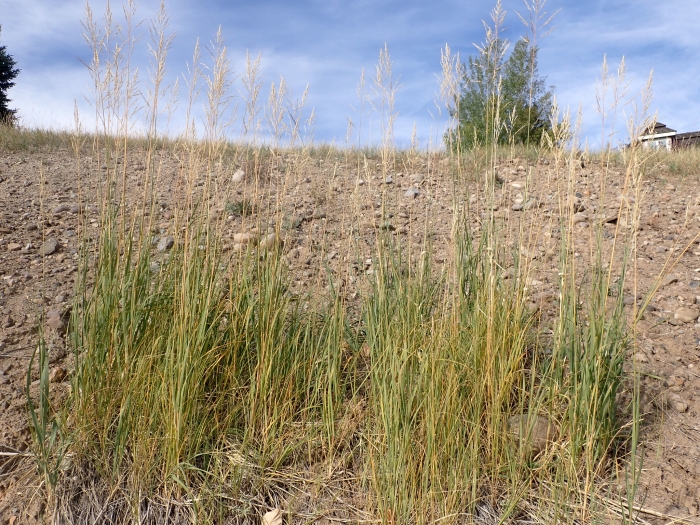Prairie Sandreed
(Calamovilfa longifolia)
Prairie Sandreed (Calamovilfa longifolia)
/
/

Matt Lavin
CC BY-SA 2.0
Image By:
Matt Lavin
Recorded By:
Copyright:
CC BY-SA 2.0
Copyright Notice:
Photo by: Matt Lavin | License Type: CC BY-SA 2.0 | License URL: https://creativecommons.org/licenses/by-sa/2.0/ | Uploader: Matt Lavin | Publisher: Flickr |

















Estimated Native Range
Summary
Calamovilfa longifolia, commonly known as Prairie Sandreed, is a perennial grass that exhibits semi-evergreen to deciduous behavior depending on the climate. It is native to the Great Plains and sandy soils of North America, thriving in open prairies, sand dunes, and other well-drained sites. This species typically reaches a height of 6 feet and a width of 1 foot, forming dense clumps of narrow, arching leaves. The inflorescence is a feathery, open panicle that appears in late summer, with a muted tan color that blends into the grass’s overall appearance.
Prairie Sandreed is valued for its ability to stabilize soil and prevent erosion, particularly in areas with loose, sandy substrates. It is often used in restoration projects, naturalized areas, and as a low-maintenance ornamental grass in xeriscaping due to its drought tolerance and minimal water requirements. In cultivation, it prefers full sun to part shade and is adaptable to a range of soil types, provided they are well-drained. While it is generally pest and disease-free, overwatering or poor drainage can lead to root rot.CC BY-SA 4.0
Prairie Sandreed is valued for its ability to stabilize soil and prevent erosion, particularly in areas with loose, sandy substrates. It is often used in restoration projects, naturalized areas, and as a low-maintenance ornamental grass in xeriscaping due to its drought tolerance and minimal water requirements. In cultivation, it prefers full sun to part shade and is adaptable to a range of soil types, provided they are well-drained. While it is generally pest and disease-free, overwatering or poor drainage can lead to root rot.CC BY-SA 4.0
Plant Description
- Plant Type: Grass
- Height: 4-7 feet
- Width: 0.571-1 feet
- Growth Rate: Moderate
- Flower Color: N/A
- Flowering Season: Summer, Fall
- Leaf Retention: Semi-Deciduous
Growth Requirements
- Sun: Full Sun
- Water: Low
- Drainage: Fast
Common Uses
Drought Tolerant, Erosion Control, Low Maintenance
Natural Habitat
Native to the Great Plains and sandy soils of North America
Other Names
Common Names: Sand Reedgrass
Scientific Names: , Calamovilfa longifolia,
GBIF Accepted Name: Calamovilfa longifolia Hack.